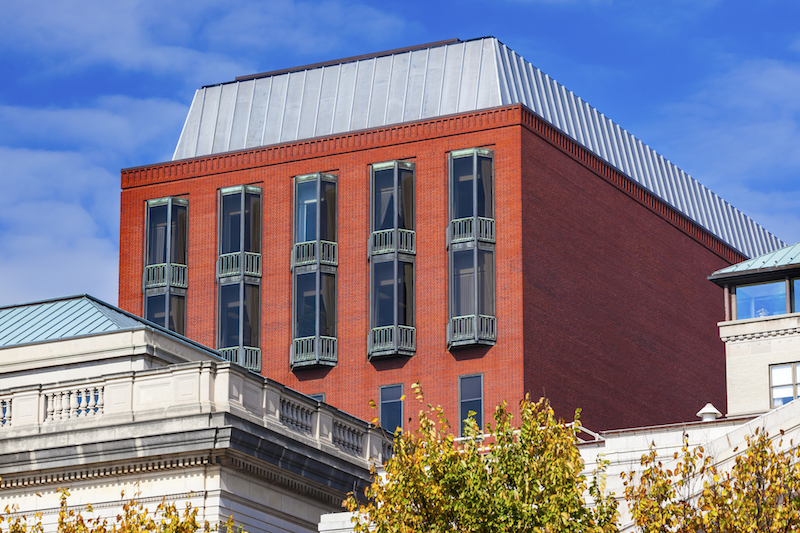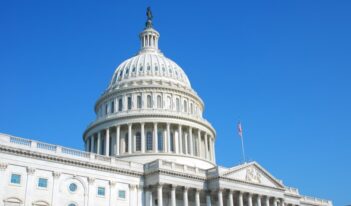
Supreme Court approval of patent adjudication raises new questions about limits of modern agency adjudication.
Last week, the U.S. Supreme Court upheld the constitutionality of certain adjudications of patent rights at the U.S. Patent and Trademark Office. Justice Clarence Thomas, writing for the Court in in Oil States Energy Services v. Greene’s Energy Group, concluded that the grant of a patent is a matter involving public rights. Accordingly, the Court held that adjudication conducted by administrative patent judges can fall comfortably within the public-rights exception to the constitutional requirement that adjudication normally take place in an Article III court. For similar reasons, the Court rejected the argument that under the Seventh Amendment a jury must adjudicate these patent disputes.
The Court’s decision in Oil States has dramatic implications for the patent system in that agency adjudication remains a viable alternative to litigation in a federal court for anyone seeking to challenge the validity of an issued patent. But the decision also left open many important questions about patent adjudication at the Patent Office and the place of the Patent Office in the larger landscape of modern agency adjudication.
The Oil States case involved a challenge to a new process authorized by the Leahy-Smith America Invents Act of 2011, which allows certain issued patents to be adjudicated before the Patent Trial and Appeal Board (PTAB). As one of us has documented elsewhere, the America Invents Act responded to the growing criticism that the Patent Office issues too many invalid patents, which drains consumer welfare. Although erroneously issued patents can be invalidated by courts, the costs of patent litigation have skyrocketed over the past decade, hampering the ability of entities to challenge wrongly issued patents in federal court.
The America Invents Act designed the new PTAB adjudicatory proceedings to create a cheaper, faster alternative to district court patent litigation as a means of challenging the validity of an issued patent. As a result, each new proceeding provides third parties with a robust, streamlined way to contest the legitimacy of issued patents at the Patent Office.
Since 2011, PTAB proceedings have become immensely popular. As of March, 2018, PTAB had received over 8,000 petitions challenging issued patents. To adjudicate these claims, the Patent Office tripled its adjudicatory workforce of administrative patent judges, who generally adjudicate on three-judge panels. Over the last two years, the U.S. Court of Appeals for the Federal Circuit, which has almost exclusive jurisdiction over patent appeals, has docketed more patent appeals arising from PTAB proceedings than from those in the federal district courts. With this proliferation of new adjudicatory proceedings authorized by the America Invents Act, PTAB has transformed the relationship between Article III patent litigation and the administrative state.
When the Supreme Court heard argument in Oil States last November, various justices raised concerns about this novel agency tribunal. Attempting to address some of those concerns, the Deputy Solicitor General referred to the Patent Office Director as the “chief judge.” This flummoxed Chief Justice John Roberts. He pointed out during the oral argument, “When we say ‘judge,’ we usually mean something else”: specifically, an Article III federal judge, not an “executive employee.” Justice Elena Kagan came to the rescue with a seemingly friendly clarifying question: “There are administrative law judges all over this country, aren’t there?”
To borrow from Dan Farber and Anne Joseph O’Connell, Justice Kagan’s reference to administrative law judges (ALJs) indicates the “lost world” of agency adjudication—the formal adjudication set forth in the Administrative Procedure Act (APA) that then-Professor Kagan no doubt taught in her administrative law classes. Today, however, most formal-like agency adjudication occurs outside of the APA’s provisions for formal adjudication—not before ALJs but under the auspices of a variety of other administrative judges, hearing officers, and other agency personnel. This is the new world of agency adjudication.
This new world is extremely diverse in substance and procedure. It covers a variety of cases, such as disputes over public benefits, disputes between federal agencies and private parties, and even disputes between private parties. As the Administrative Conference of the United States has written, “some proceedings are highly adversarial; others are inquisitorial. Caseloads vary. Some have huge backlogs and long delays; others seem relatively current. The structures for internal appeal also vary.”
Some adjudicatory systems in the new world handle hundreds of thousands of cases a year, while others handle just a handful of cases annually. Many of these adjudicative proceedings are essentially just as formal as formal adjudication governed by the APA, but others are quite informal.
PTAB adjudication is one example of formal adjudication that takes place outside of the APA. The PTAB process is actually not that unusual in the new world of agency adjudication. But it lacks one critical feature that exists in both the lost and new worlds: final decision-making authority by an agency head. To be sure, the Patent Office Director has attempted to overcome her lack of final decision-making authority by stacking panels on rehearing with administrative patent judges who share her substantive inclinations. But such a workaround falls short of formal agency-head review. As we argue in a forthcoming article, this deficit at the Patent Office can and should be addressed by internal agency practices, agency rulemaking, or even statutory amendment.
Failure to bring PTAB adjudication within the mainstream of new-world agency adjudication could prove problematic for the future of patent adjudication within the Patent Office. For instance, Gary Lawson argues that the Patent Office Director’s lack of final decision-making authority may raise a separate constitutional issue. Under the current statutory and regulatory scheme, the administrative patent judges, not the Senate-confirmed Patent Office Director, have final decision-making authority. Lawson understands this scheme to mean that administrative patent judges are principal officers under the Appointments Clause and must be appointed by the President with advice and consent of the Senate.
On the other hand, Justice Neil Gorsuch’s dissent in Oil States, joined by Chief Justice Roberts, argues that any type of agency-head influence over the outcomes in adjudication is constitutionally problematic, at least in the context of patent adjudication. He argues that, under Article III of the Constitution, it should not be the case that “a political appointee and his administrative agents, instead of an independent judge, resolve the dispute.” For Justice Gorsuch, the lack of judicial independence poses a problem because “when an independent Judiciary gives ground to bureaucrats in the adjudication of cases, the losers will often prove the unpopular and vulnerable.”
These constitutional tensions in agency adjudication will no doubt continue to be worked out by the Supreme Court in the years to come. Lisa Ouellette has astutely observed that the importance of agency-head final decision-making authority merits further theoretical development and empirical investigation. That observation is certainly true in the context of agency adjudication at the Patent Office. Further inquiry is needed to determine how the new world of agency adjudication differs from the lost world contemplated by the Congress that enacted the APA more than seven decades ago.
This essay draws on their article The New World of Agency Adjudication, which is forthcoming in the California Law Review.





